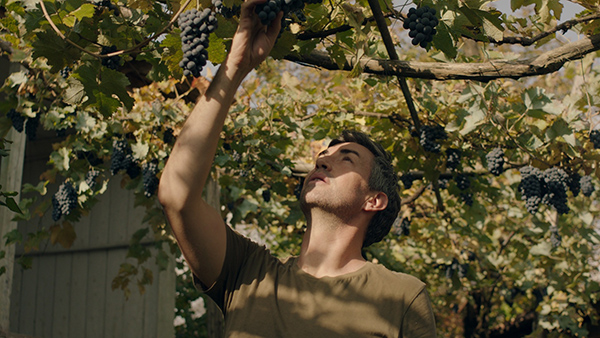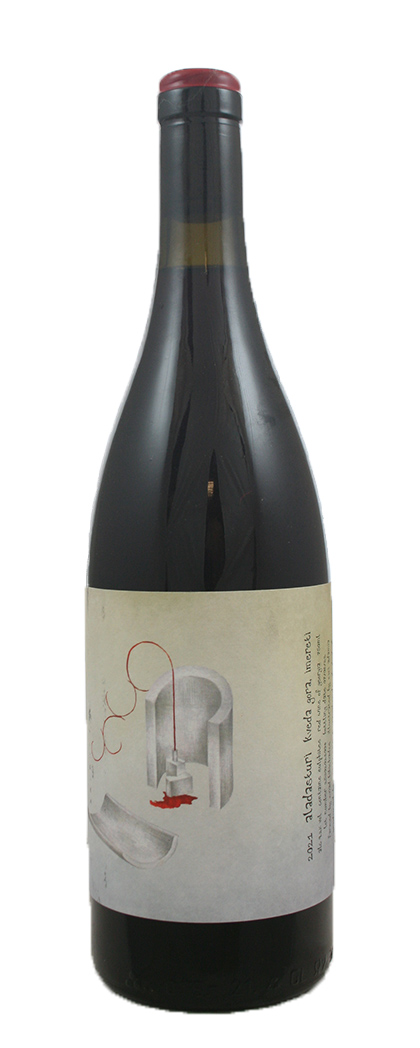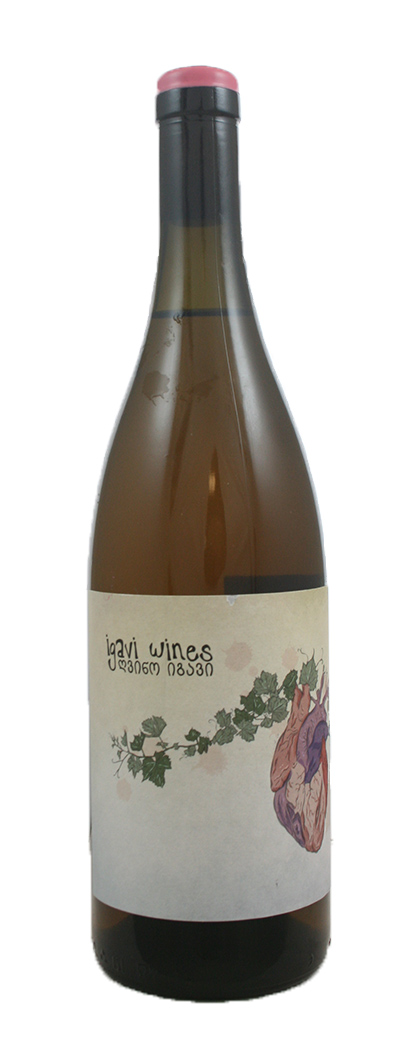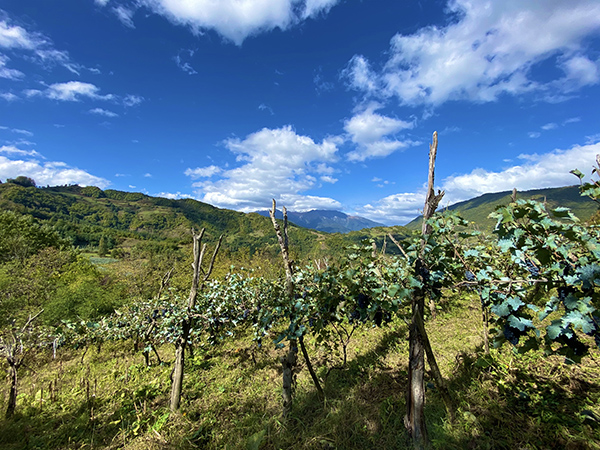Aidan Raftery began making wine in 2013 with a label called Vin du Patron, produced in the garage of his home in Melbourne, Australia. He had just opened Persillade, the first solely natural wine bar in Melbourne, and the wine label was an extension of the offering. This project continued until 2017 when he sold his restaurant and moved into wine importing. He first visited Georgia in that year too and fell completely in love with the country, its people, culture, and of course, the wines, so much so that he decided to move there in 2019, purchasing a house and vineyard in Western Georgia in a small village called Zeindari.
His wine label is called Igavi which in Georgian means a fable or folk story. The name was inspired by a story he was told when he first visited Georgia which goes as follows: When young soldiers would go off to battle they would take a cutting from their family vineyard and tuck it under their armour next to their heart, so that if they were killed their family’s vine would grow from their dead body. This tale is illustrated by different artists for each cuvée, but each one is their individual interpretation of that story.
Imereti, where one of Aidan’s Tsolikouri vineyards is located (and his Aladusturi one), is a very diverse region in western Georgia with dramatically different climatic conditions in all the different sub-regions, but its hallmark is that it is subtropical; being warm and humid throughout. All his vineyards are farmed organically. Soils are turned in the spring, the rows between the vines are heavily (wild)grassed and mown twice – once in the middle of summer and once before harvest.
Tsolikouri Imereti is an equal parts blend of two iterations of this grape: Tsolikouri Melqo and Tsolikouri Bazaleti which are grown in a very sheltered site surrounded by forest on all sides and sitting in a small gully.
The grapes in this case were manually harvested, whole-cluster, straight-pressed into 500-litre stainless steel tank and fermented with native yeasts before ageing nine months on full solids in the same tank (no racking) and the wine is bottled without filtration, fining or the addition of sulphur.
A very cool and wet vintage gave a lower alcohol expression of this vineyard, yet the wine retains all the hallmarks of this site albeit viewed through a more delicate lens. The two types of Tsolikouri are very different. Melqo when ripe is a deep burnished gold colour, while Bazaleti retains it blue green appearance even when ripe. The two are co-planted together, the Melqo component has much higher sugar than the Bazaleti, both are harvested when the two are in balance and harmony with one another. Light and bright in appearance with aromas of green pear, fresh quince, lime leaf, a little flesh in the mid-palate but tightened and lengthened by the acid drive.
A very cool and wet vintage gave a lower alcohol expression of this vineyard, yet the wine retains all the hallmarks of this site albeit viewed through a more delicate lens.
Tsolikouri Lechkhumi comes from Tsilamieri. Lechkhumi is a mountainous area in the north-west of Georgia and one of the smallest winemaking regions in the country. It also has some of the highest rainfall, and although summer here can be very warm the nights are generally cool. This particular site is east-facing, so only gets morning sun and is in the shade from around 1pm. Thus, it is a very slow ripening and cool site on a steep 45-degree slope, heavy clay, rich in limestone, 770m above sea level. The vines are 40–60-year-old.
100% whole-cluster grapes are pressed into a mixture of stainless tank, 540-litre qvevri and a 400-litre 60-year-old oak barrel. Wild ferment and malo ensues with ageing for a further nine months on full solids, with the qvevri and barrel not topped up allowing a flor component to build. The three elements are finally racked and blended and allowed to settle for two weeks prior to bottling – nothing is added.
The two components of the final blend under flor were left with a small ullage so the influence is subtle. Incredibly saline and mineral, cucumber and green apple with dried chamomile from the oxidative flor components.
The Aladasturi vineyard is on an exposed north-east facing site on a hill receiving sun throughout the day, it’s very windy at the same time giving great ripening potential with lower disease pressure. The soils here are sandy-clay with limestone, and the vines are 30-40 years old.
Destemmed, whole-berries are macerated in plastic open fermenters of 1000 litres for ten days and undergo wild ferment before maturing for a further 9 months on full solids (no racking) in 530-litre qvevri.
A light nervy red with very fine and gentle tannins, perfumed, spicy, the whole gamut of red berries with white pepper and hints of iris. Not dissimilar in style to Pineau d’Aunis.
The Aladasturi rosé comes from the same vineyard. The grapes in this case are whole-cluster straight-pressed into 300-litre stainless tanks where they remain for nine months on lees. 20 ppm of sulphites are added in the spring.
Very pale in colour, more Vin Gris or Blanc de Noir in appearance, this rosé exhibits subtle reduction, notes of white cherry and pink grapefruit, and is glassy, angular, and energetic.
An exposed sunny hill site in Leckkhumi provides near perfect growing conditions for Aidan’s Orbeluri Ojaleshi. The west-facing vineyard is 760 metres above sea level on clay-limestone soils.
One of Georgia’s oldest and noblest varieties, Ojaleshi, means “growing on a tree” in the Megrelian dialect of Georgian (ja=tree). It was the dominant variety in the mountainous district of Samegrelo in north-western Georgia, it was trained as a maghlari vine up persimmon or alder trees. Ojaleshi was widely cultivated in this manner throughout Guria’s central and upper mountain villages before the arrival of fungal diseases and phylloxera in the late 19th and early 20th centuries destroyed vineyards. Current plantings are trained lower to the ground, as in Guyot simple or double, which lowers yields but produces higher-quality fruit. Ojaleshi performs best on the limestone soils.
One of Georgia’s oldest and noblest varieties, Ojaleshi, means “growing on a tree” in the Megrelian dialect of Georgian (ja=tree). It was the dominant variety in the mountainous district of Samegrelo in north-western Georgia
Destemmed whole-berries are macerated for 12 days in plastic open-top fermenters, ferment with indigenous yeasts, age without racking in 555-litre qvevri, and are bottled without filtration or fining and just 20 ppm of sulphites are added in the spring. This version certainly reflects the vintage being extremely delicate, weightless and gentle, very aromatic, with suggestions of blueberry with spent church incense, violet and gun smoke.
2021 Igavi Tsolikouri Imereti
2021 Igavi Tsolikouri Lechkhumi
2021 Igavi Aladasturi (red)
2021 Igavi Rosé (Aladasturi)
2021 Igavi Orbeluri Ojaleshi






